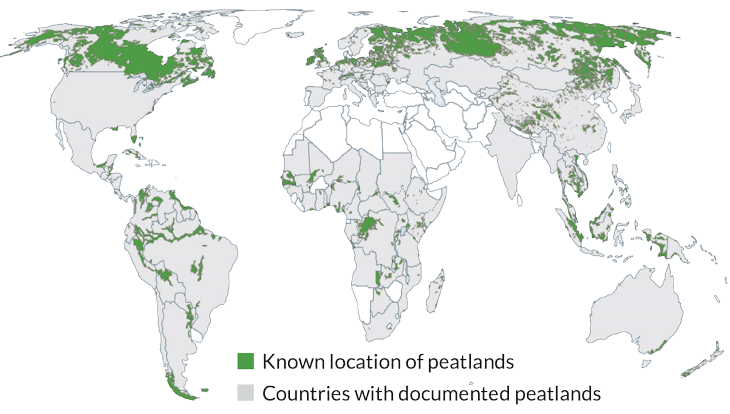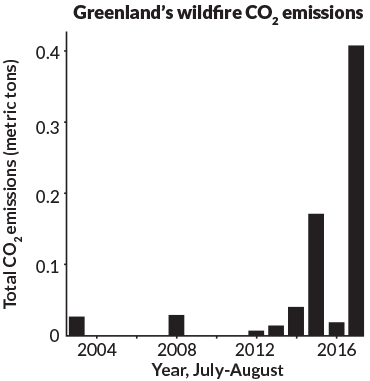Thursday March 8th… Dear Diary. The main purpose of this ongoing post will be to track United States extreme or record temperatures related to climate change. Any reports I see of ETs will be listed below the main topic of the day. I’ll refer to extreme temperatures as ETs (not extraterrestrials)😊. Here is today’s main climate change related topic: (If you like these posts and my work please contribute via the PayPal widget, which has recently been added to this site. Since I am a paraplegic I can definitely use any funds for medical expenses. Thanks in advance for any support.)
For “Peats” Sake
No matter how old one gets one can learn more each day. Such was the case with yours truly after I read a lengthy article about peat and carbon pollution. I’ve known that peat slowly forms in wetlands and is a precursor of lignite coal. When dried peat can serve as a fuel, mostly for cooking. I had no idea, however, what a huge carbon sink peat serves around the planet, but had an inkling that since due to compression over eons coal will form from the stuff that there was a carbon link. Here is the article that I will be using and quoting from on this post:
https://www.sciencenews.org/article/bogs-peatlands-fire-climate-change
What I’m most concerned about here is the awful potential for more carbon to be released, mainly in other countries besides the U.S., but partially due to the West’s consumerism putting pressure on peatland that can release global warming pollution. Let me explain by quoting this passage from the Science News article:
Worldwide, peatlands store massive amounts of carbon in thick blankets of wet organic matter accumulated in the ground over centuries. And though they cover just 3 to 5 percent of Earth’s land surface, peatlands store a quarter of all soil carbon. That adds up to more carbon than all of the world’s forests combined.
But changes in land use — draining the water to plant acres of crops that demand drier soil, a common practice in tropical regions, or building a road through an area — can dry out the peat. And then, a single carelessly tossed cigarette or an errant lightning strike can ignite a fire that will smoke and smolder for months, releasing thousands of years of stored carbon as carbon dioxide into the atmosphere.
Or fires set to clear land for agriculture can get out of hand, like they’ve done in Indonesia: Over the last few decades, the country has drained many of its peatlands to grow oil palms and other crops. Now, the country is seeing the worst-case scenario of what can happen when peatlands are disrupted and desiccated. In northern latitudes, meanwhile, thawing permafrost exposes peat that has been buried for years, which can fuel fires like those seen in Greenland last summer.
That’s right. When you purchase a product containing palm oil demand for that product increases, thereby increasing demand for legal or even illegal draining of wetlands for farms. Yes, I did see the Years of Living Dangerously episode about palm oil when much of Indonesia was on fire in 2015.
Due to rapid Arctic warming we also are starting to see peatlands igniting in Greenland and Siberia. I did not know that peatlands store a quarter of all soil carbon on Earth. Between methane and carbon release in northern latitudes due to present and future planetary warming, I’m worried that the game of saving the environment and associated human civilization could be lost, or at the least more difficult to win. From the article here are how peatlands are currently spread across Earth:

This chart from the Science News article doesn’t look good:

Source: European Centre for Medium-Range Weather Forecasts
The bulk of peatland is located in far northern latitudes as indicated by all the green on the above Science News chart. Will the unintentional release of carbon from decayed vegetation be the proverbial straw that breaks the climate change camel’s back? I’m sure that part of this new data from CO2 Now is from burning peat. We’ve just reached the 410 parts per million plateau:
. Daily CO2
Mauna Loa Observatory | Atmospheric CO2 Concentrations
March 4, 2018 |
409.97 ppm |
NOAA-ESRL |
March 4, 2017 |
407.46 ppm
|
NOAA-ESRL |
. daily mean concentrations | ppm = parts per million
This is an awfully depressing topic, so I’ll try to offer some good news tomorrow.
The Climate Guy
I first learned about the evils of palm oil four years ago when on a trip, and sadly the stuff is in so many products. pretty much most fast food and anything packaged, so I make sure to check the labels on anything that I buy. very depressing indeed.
Indeed Nicholas. And from what I have read palm oil isn’t healthy to ingest either.